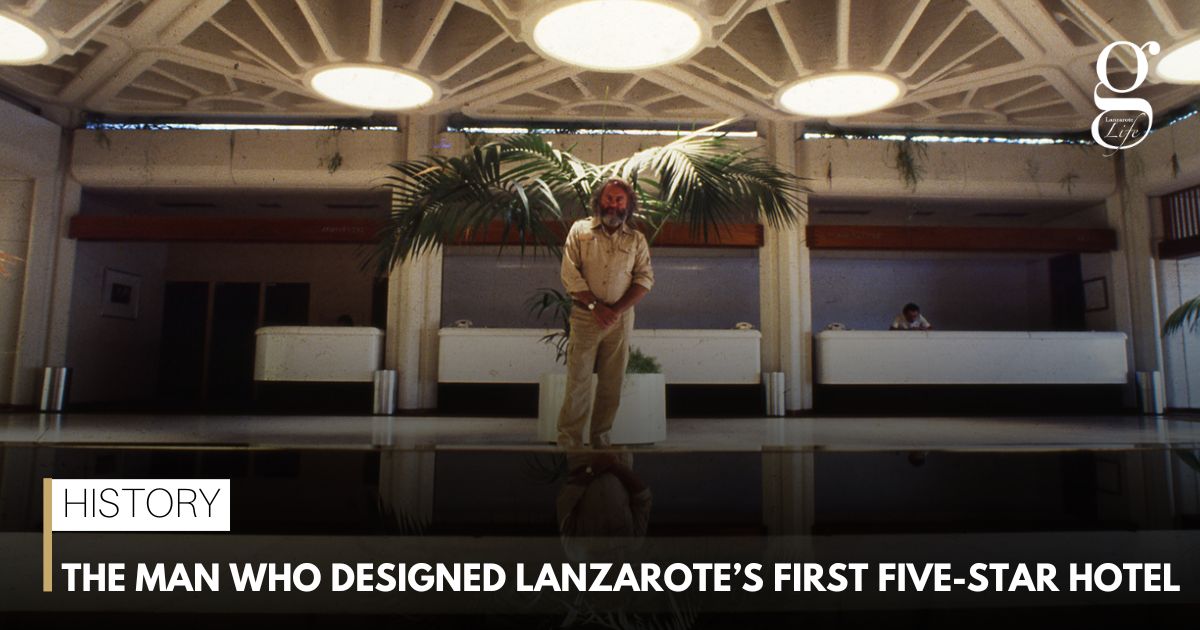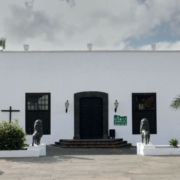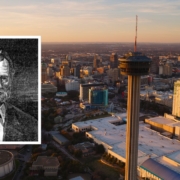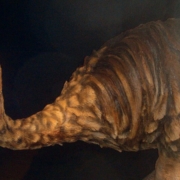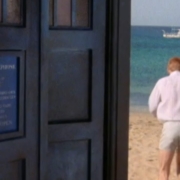Fernando Higueras was the visionary architectural genius who designed the first five-star hotel on Lanzarote – the Meliá Salinas – and helped César Manrique to transform Lanzarote.
Photo (www.fernandohigueras.org)
One day in 1959 or 1960, a 29-year-old architecture graduate called Fernando Higueras was queueing in Casa Macarrón, an artists’ supplies shop in Madrid, when he recognised another face in the queue. That face belonged to César Manrique, eleven years older than him and a well-known face in Madrid’s art scene. The two got chatting, and the resulting friendship led to some of Lanzarote’s most inspiring architectural projects.
Manrique contracted Higueras to design his house in Camorritas, Madrid. This spectacular building, with jutting balconies of wood and reinforced concrete, and a large tree actually inside the building, reflected both Manrique’s ideas of blending art with nature and Higueras’s audacious style.
Higueras visited Lanzarote in 1962, to look at the land around Papagayo beach, where he had been hired to design a home for a Swiss banker. The following year he returned to draw up an urbanisation plan for Playa Blanca which was so revolutionary that it has been acquired by the Museum of Modern Art in New York.
These projects, along with several other incredible visions that would have transformed Lanzarote, never came to fruition. Among them were the “City of Seagulls” – a community of house shaped like clusters of mussels, clinging onto on the Famara cliffs overlooking La Graciosa.
Higueras’ widow Lola Botia explains that “These ideas are still ahead of their time today. In the 60s and 70s, promoters weren’t ready for Fernando’s ideas and didn’t have enough vision to see how fantastic they could have been.”
In the 1970s, however, Higueras did take charge of some major projects on Lanzarote – chief among them being the island’s first five-star hotel, the Meliá Salinas in Costa Teguise. He would fly over every fifteen days to check how work on the hotel was progressing, and each time he would be met at the airport by César Manrique and stay as a guest at his home in Tahiche.
The Meliá Salinas is almost certainly the most impressive of all the pleasure palaces built in the 70s and 80s on Lanzarote. Built by Higueras according to the brutalist current of the time, it is a poem in concrete – a spectacularly modern building that also hints at the ancient terraces of the island’s farmers. Manrique also worked on the hotel’s gardens – both the exterior pool and the stunning hanging gardens inside the hotel itself, and it soon became the most profitable part of the Sheraton chain’s empire.
Higueras also designed the Palace at La Mareta, known as the King’s House, and carried out renovations on the Palacio Spinola, Teguise’s most emblematic colonial building, but it is the Hotel Meliá Salinas that remains his greatest achievement on Lanzarote.
Lola Botia has told El País, “Manrique said that Lanzarote was the ugly duckling of the Canary Islands, but there they both committed themselves to a way of understanding landscapes that, until then, no one had understood before. It was a prediction of the ecological movement, and they turned a dream into reality.”
For regular updates, pictures and videos of Lanzarote be sure to like and follow our Facebook page “Gazette Life Lanzarote”.


